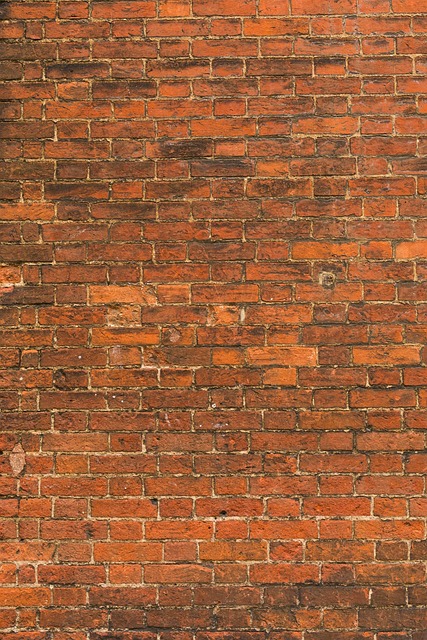Grout stains, caused by water exposure, mold, spills, or aging, impact tiled surfaces' aesthetics. Identify stain types and choose appropriate cleaning methods. Prepare tools like a stiff-bristled brush, grout cleaner (powder/liquid), warm water, and gloves. Avoid general cleaners; use deep cleaning products designed for grout. Start with regular weekly cleaning, blot spills immediately, and reseal every few years. Take precautions during deep cleaning: test solutions on a hidden area, ventilate well, and avoid abrasives. Maintain daily sweeping/vacuuming and spot cleaning to prevent future stains.
Tired of noticing unsightly grout stains on your once pristine tiles? Deep cleaning is the solution to restore your grout lines to their original luster. Understanding grout stains, whether caused by mold, mildew, or everyday grime, is the first step. This guide covers everything from gathering the right tools and choosing effective cleaning solutions to a detailed step-by-step process for deep cleaning. Learn how to prevent future stains and avoid common mistakes, ensuring your grout lines stay clean and fresh long-term.
Understanding Grout Stains: Common Causes and Types

Grout stains can range from mild discolorations to stubborn, deep-seated marks that compromise the aesthetic appeal of your tiled surfaces. Understanding the common causes and types of grout stains is the first step in effective deep cleaning.
The most frequent culprits behind grout stains include exposure to water and moisture, which promote bacterial growth and lead to mold and mildew; spills from liquids like coffee, tea, or fruit juices; foot traffic that tracks in dirt and grime; and improper sealing or aging of the grout material itself. These factors can contribute to various stain types, such as yellowing from mold and mildew, discolored patches from oil-based stains, or general discoloration due to age and wear. To effectively remove stains from grout lines, it’s crucial to identify the specific type and address it with the appropriate cleaning method.
Preparation: Gathering the Right Tools and Materials

Before diving into the deep cleaning process, gathering the right tools and materials is crucial for effectively removing stains from grout lines. Start by acquiring a few essential items such as a stiff-bristled brush or scouring pad, a high-quality grout cleaner (either powder or liquid), some warm water, and protective gloves to safeguard your hands. Additionally, consider investing in a vacuum cleaner with a small, adjustable nozzle to suck up loose debris and grime without causing further damage to the grout.
Ensure that you choose a grout cleaner specifically designed for removing stains, as these products contain powerful yet safe ingredients that can cut through dirt, mold, and mildew. Always follow the manufacturer’s instructions on the packaging for optimal results and safety precautions. Having the right tools and materials in hand will make the deep cleaning process more efficient and ensure that your grout lines are thoroughly cleaned without causing any damage or discoloration.
Choosing Effective Cleaning Solutions for Grout

When it comes to tackling grout stains, selecting the right cleaning solutions is half the battle won. The key is finding products that are specifically designed to penetrate and lift dirt, grime, and discolourations from grout lines. Avoid general household cleaners as they often lack the potency needed to effectively remove stubborn stains.
Opt for deep cleaning solutions formulated with powerful yet safe ingredients. Enzymatic cleaners or those containing oxygen-based bleach are popular choices as they break down organic compounds without damaging the grout material. Always follow the product instructions and test on a small, hidden area first to ensure suitability and to prevent any potential discolouration.
Step-by-Step Guide to Deep Cleaning Grout Lines

Deep cleaning grout lines involves a systematic approach to remove stubborn stains and restore the freshness of your tiled surfaces. Start by gathering the necessary tools, including a quality grout cleaner, a soft-bristled brush, a vacuum cleaner with a small attachment, and some warm water. Put on protective gloves to safeguard your hands from chemicals.
Begin by sweeping or vacuuming the floor to remove loose debris. Next, apply the grout cleaner directly onto the stained areas, following the product’s instructions for proper dilution. Let it sit for a few minutes to allow the chemical action to take effect. Use the soft-bristled brush to gently scrub the grout lines, ensuring you reach into every crevice. Rinse thoroughly with warm water, and repeat if necessary until the stains are removed.
Tips for Preventing Future Grout Stains

To prevent future grout stains and keep your spaces looking fresh, start by understanding what causes them in the first place. Regular cleaning is key; use a soft-bristled brush and mild detergent to wipe down grout lines weekly. This removes loose debris before it sets, preventing new stains from forming. Additionally, sealing the grout with a water-repellent product can create a protective barrier, making it easier to remove any residue.
Another effective strategy is to address spills immediately. Whether it’s a drop of juice or a splash of red wine, blot up liquids as soon as they touch the grout. This prevents them from seeping in and causing discolouration. Lastly, consider resealing your grout every few years to maintain its protection against stains, especially in high-traffic areas like kitchens and bathrooms where moisture and dirt can accumulate more quickly.
Common Mistakes to Avoid During the Cleaning Process

When tackling deep cleaning for grout stains, it’s crucial to be aware of common mistakes that can hinder your efforts rather than help. One of the most frequent blunders is using abrasive tools or cleaners directly on the grout without a protective layer. This approach can damage the grout and surrounding tiles, making the stain more difficult to remove. Always apply cleaning solutions onto a soft cloth or sponge first, then gently rub the stained area.
Another mistake to avoid is overlooking proper ventilation. Deep cleaning can release potent fumes from certain cleaning products, so ensure windows are open and an exhaust fan is running. This helps prevent inhalation of harmful chemicals and speeds up drying time. Lastly, don’t rush the process. Take your time to thoroughly test cleaning solutions in a small, hidden area first. Different grout types may require specific care or treatments, so understanding their needs beforehand saves you from regrettable results.
Maintenance: Keeping Your Grout Lines Clean and Fresh

Regular maintenance is key to keeping your grout lines clean and fresh. Preventing stains starts with consistent cleaning. Sweep or vacuum floors daily to remove loose dirt and debris that can settle into grout lines. Spot-clean any spills or messes immediately to avoid staining. Use a soft-bristled brush and mild soap and water solution for regular scrubbing, focusing on the grout joints.
To keep your grout looking like new, consider sealing it once or twice a year. Sealing products create a protective barrier against moisture and dirt, making it easier to remove any future stains. Regular maintenance and prompt stain removal will ensure your grout lines stay looking clean and bright between deep cleaning sessions.
